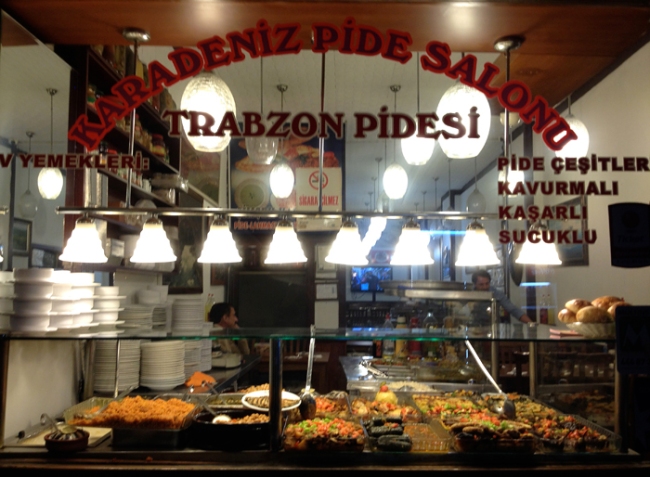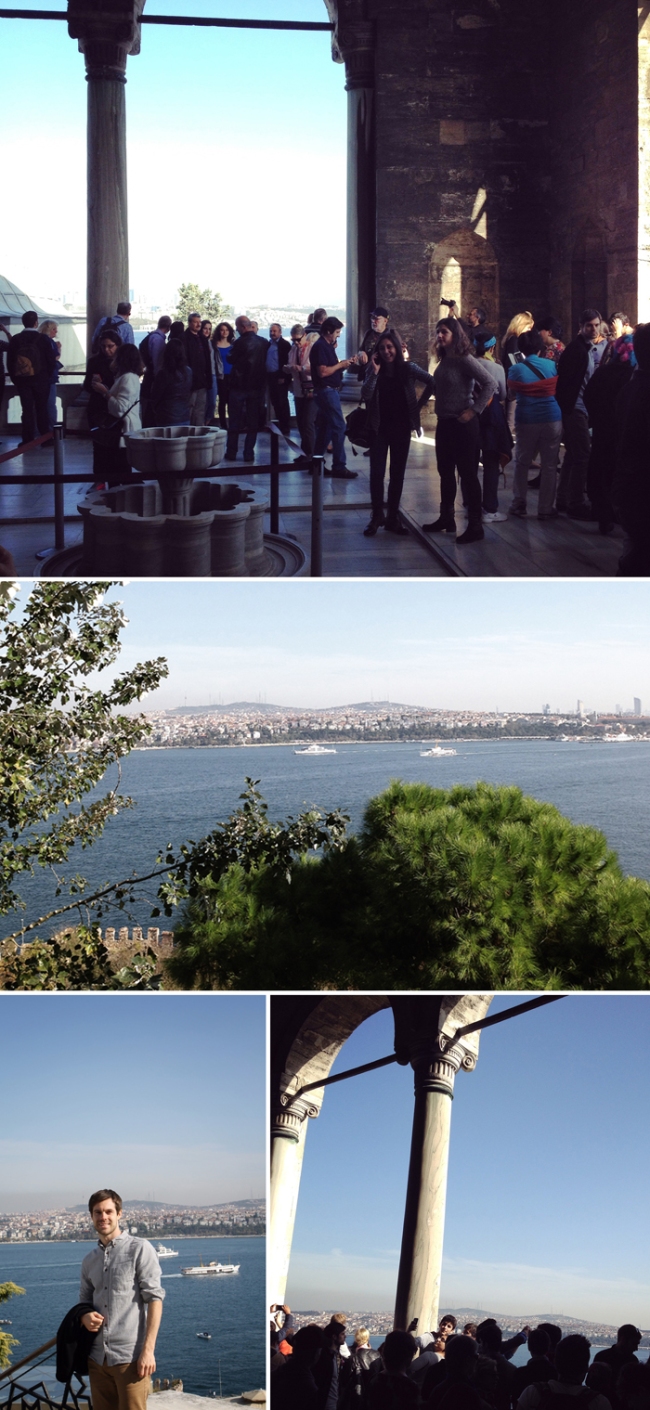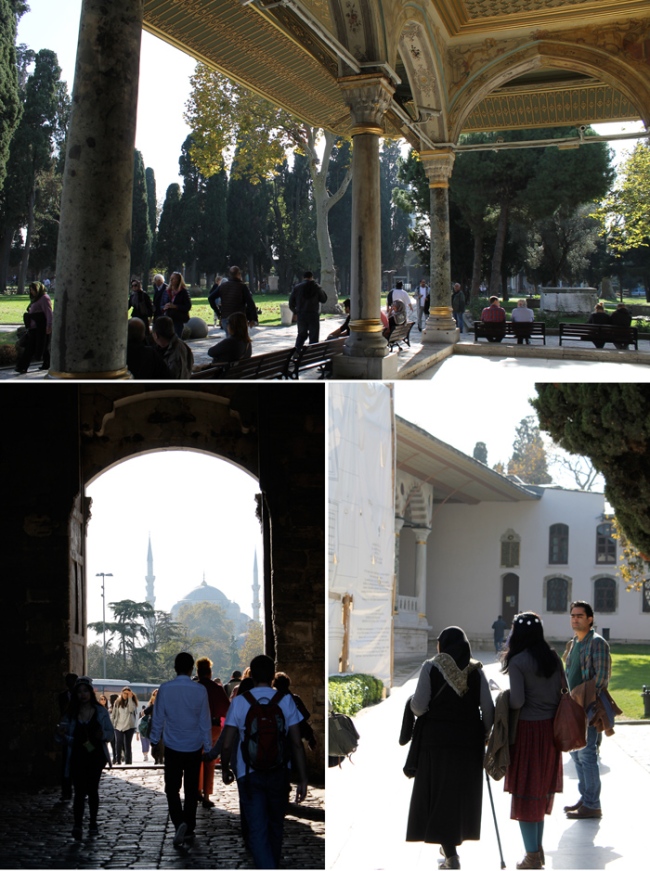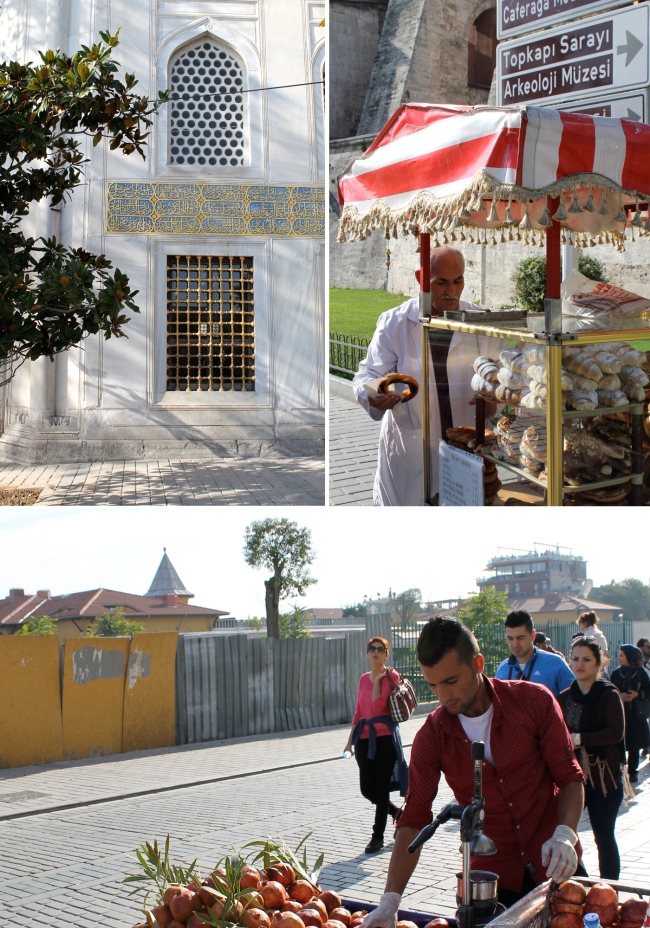Our trip to Istanbul was for our wedding anniversary in early November. For both of us, visiting Turkey has always been a dream trip. The city is rooted in antiquity, but with 14 million inhabitants and an influx of daily visitors, it is fast-paced, modern, and a chaotic mix of sights and sounds. It was definitely one of the most stimulating and memorable places we have visited.
Istanbul is the largest city in Europe and it spans two continents, so deciding where to stay was an initial consideration while we were planning. We hoped to focus on the main tourist sites over our 5-day visit, so we stayed in the historic neighborhood of Sultanahmet. Our hotel was a short walk to Topkapı Sarayı, Aya Sofya, and Blue Mosque. At the end of the block was a main tram stop, so we were able to take the tram (light rail) to Beyoğlu, the busy retail, business and nightlife district of the city. We were also not far from the ferry connections to the Asian Anatolian side. As first time visitors, it was a nice place to be.
Favorite moments from Istanbul
Our first morning we walked from our hotel through Gulhane Park hoping to find the entrance to the Ottoman palace, Topkapi Sarayi. Instead we found Set Üstü Çay Bahçesi a tea garden within the park that overlooks the Bosphorus. We decided to order çay (‘chai’) and sat watching boats crossing into the Sea of Marmara . Turkish tea has a unique preparation. The tea is traditionally served in a stacked kettle made of copper. Water is boiled in the lower pot and a small amount is added to loose-leaf black tea in the upper pot. The strong tea is served in a tulip-shaped glass, our server showed us how to dilute it with clear water and add sugar to sweeten it.
Our morning by the water was one of those moments when we realized that while it is helpful to plan and prepare as much as possible, sometimes the most memorable travel experiences are the ones that you aren’t expecting. Afterwards, we made our way to the courtyard shared by the Blue Mosque, Aya Sofya, and Topkapı Sarayı, which I shared more about here. It was a great weekend for sightseeing: uncommonly warm and clear for November, and the sky was so, so blue.
Two of our favorite street foods in Istanbul were Simit (flat turkish sesame ‘bagels’) and dondurma (icecream). Turkish Icecream is marvelous. It is made with salep, a flour from the root of orchid flowers. I would describe the texture as part ice-cream, part taffy (and really delicious).
We explored chaotic Eminönü, where street vendors were selling knockoffs and factory seconds of denim, handbags, watches, and sneakers spread out on the curbs. We walked across Galata Bridge (a crossing that spans the Golden Horn) toward Galata Tower near the end of the afternoon.


Derek just told me that Galata Tower was built by the Romans as a defense tower. A chain was strung from the tower across the waterway to limit ships from entering the Golden Horn. It is now known for having one of the nicest views of the city and is a trendy place to have a drink or stay the night in Istanbul.
We wound our way to İstiklâl Caddesi, a high-traffic pedestrian street of fashionable stores and restaurants that connects Galata Tower to Taksim Square. It was impressive lit up at night and at any time of the day is filled with thousands of people. After what felt like endless wandering through a maze of unmarked alleys looking for any of several recommended lokantas, we decided on a Turkish cafeteria. We ate a hearty homestyle dinner of dolmas – stuffed grape leaves, savory roasted vegetables (the Turks like their cooked vegetables soft), and cheese filled phyllo called börek.

Afterwards we drank Rakı, anise flavored liquor (on the rocks), amidst puffs of Nargile- water pipes filled with flavored tobacco. We walked home across Galata Bridge and watched lines of fishermen pull in sardines, anchovies, and Istavrit late into the night.
————————————
Like many travelers before us, we made a stop at Kapalıçarşı, The Grand Bazaar. There are modest estimates of 250,000 visitors per day and serious shoppers arrive with empty suitcases. It is a labyrinth of hundreds of tiny shops selling pottery, jewelry, glass, and gorgeous Turkish textiles. The shops spill onto the streets leading to the Grand Bazaar, and shopkeepers are forward and persuasive— bargaining is part of the custom. Most of the items are similar so it is the personal touch that sets each vendor apart– we were even offered tea. At one shop, we were shown a dozen kilims, then a dozen more, and finally 30 different rugs! Between rug hauls, Derek said ‘Alright…If we aren’t buying a rug, we need to get outta here’. I complimented the quality of the rugs and made a sheepish apology for being indecisive and we made our getaway. (We did end up buying Turkish Peshtemals near our hotel!)
While planning, I read this beautiful article from the New Yorker, and felt that if there was one thing we had to do before leaving Istanbul, it was eat at Çiya Sofrasi. Derek was more than content to hop on a boat and spend an afternoon on the Anatolian side, so we took a commuter Ferry to Kadıköy for a late lunch. I wrote a post about our excursion here.
We spent our last day in Istanbul in Bebek, one of the Bosphorus fishing villages, before we met up with a dear friend on İstiklâl Caddesi for meze (amazing Turkish appetizers, similar to tapas) and the aforementioned drink Rakı that is my new favorite , at Duble Meze. All of the food in Istanbul shared a common thread, but the meze we had that evening was really some of the best food we have ever had. It was also our first time eating ground intestines, served bruschetta style!
A week of traveling is always a whirlwind in retrospect. Looking back it is now two months since our trip, our experience in Istanbul still feels very special. It is an incredible, complex, and fascinating city. We have agreed that if the opportunity ever presents itself, we will happily return to Turkey. We would love to see more of Anatolia, Kayseri, Cappadocia, the Turkish Islands, and plenty more of Istanbul.
————————————
And I had a MN sighting! On the 3-hour flight to Istanbul I sat next to a woman who lives near us in Saint Paul!! Every decade she takes a trip to celebrate her birthday. She was taking a 3-week bus tour of the country for her 70th birthday.
More of our photos from Istanbul here and here.
Links
Watch Anthony Bourdain take a Food Tour of Istanbul (YouTube)
Watch Rick Steve’s Explore Istanbul (YouTube)
Istanbul’s New Meze Masters Food and Wine































